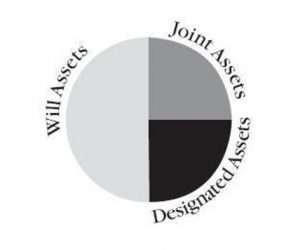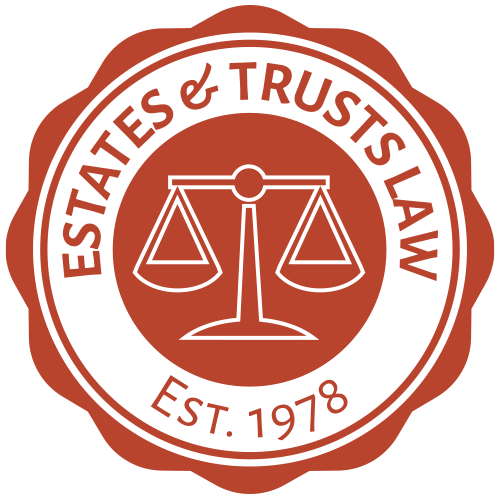At Last, The Secret to Giving Your Stuff Away in Your Will

Making Wills Easy – New Summer Series 8
How do you know what to put into your will? I’ll show you how to quickly figure this out. Then we’ll get into specifics about your different types of assets in future posts. I’ll cover joint asset dangers, personal items and digital assets. I have taught my simple system across Canada for over twenty years.
Get a piece of paper and draw a circle. I’m serious. This really helps in understanding what goes into your will.
Imagine that your circle contains all your assets ─ everything you own.
This circle is a symbol of your estate pie. It can be worth $50,000 or $5 million. It doesn’t matter (well, for the sake of this exercise, anyway). Whatever you own has to fit into your circle. Let’s call it your estate pie.
Why is this an estate pie? Because everyone wants a slice of your pie, including the tax department.
Each Slice of Your Estate Pie is Different
Now divide your circle into three sections or slices. You don’t need to make them all the same size. But, for this exercise, make three sections like the one in the circle below.
You should have a drawing that looks like this:

These three sections represent three different kinds of estate assets: joint, designated and will assets. You need to understand how each slice is different. I’ll take you through each of these three sections one by one. Some assets are not controlled by your will and some are. Perhaps you can guess which slice that is.
Each slice of your estate pie may have different items in it. But everything you own fits into one of these three pie slices. You may have more assets in one slice than the others. This may depend if you are single or married or divorced. Here are some examples of items in each slice.
Examples of Your Joint Assets
These are joint investment bank accounts or your home. Joint can be good. Joint property passes to the surviving joint owner. In theory, this is automatic, except where there is trouble. My next series is about the dangers of joint assets.
Examples of Your Designated Assets
These are typically contractually arranged to pass benefits to anyone you designate to be your beneficiary. Best examples are life insurance, pensions, registered investments like TFSA, RRSPs and RRIFs.
Examples of Your Will Assets
Well, everything you own that is not a designated or joint asset is your will asset. That could be the contents of your home or your car.
The Secret to Making Wills Easy
These three asset groups, or slices of your pie, have distinct ownership characteristics. You must understand them to make a will. They also have different will planning consequences.
When you die, each slice of your estate pie is distributed in different ways. This distribution is based on the law, contractual arrangements or your will.
This is the secret key to understanding what goes into your will.
The secret to make a will is to avoid including reference to your joint and designated assets in your will. That makes making your will easy as ABC.
In the next few posts, I’ll explain how you can use this secret to make your will. I’ve taught this secret to thousands, and I know it works.
Now let’s look at each of these types of assets in turn. First, I’ll cover designated assets. They can be used to avoid probate and probate taxes.
Want help making your will? Contact me to make an appointment to make your will.
Posted In: Estates, Wills On: August 17th, 2018





 416 769 - 9800
416 769 - 9800